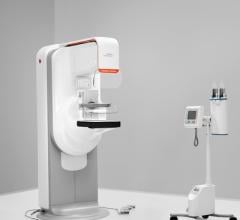
Getty Images
January 16, 2024 — The Society of Nuclear Medicine and Molecular Imaging (SNMMI) and the European Association of Nuclear Medicine (EANM) have issued a new procedure standard/practice guideline for estrogen receptor imaging of breast cancer patients using FES PET. The standard/guideline, published ahead of print in The Journal of Nuclear Medicine, is intended to assist physicians in recommending, performing, interpreting, and reporting the results of 18F-FES PET studies for patients with breast cancer.
More than two million women worldwide are diagnosed with breast cancer each year. The estrogen receptor (ER) is a significant contributor to breast cancer formation and progression and, as such, is an important target for therapy. Approximately 70 percent of breast cancers will express ER, and the determination of ER expression by tissue analysis is part of the standard of care for those newly diagnosed breast cancer.
Multiple studies suggest that 18F-FES PET—which is approved for clinical use in France and the United States—offers advantages in assessing tumor ER expression, predicting response to ER-targeted therapies, and clarifying equivocal staging and restaging results in patients with ER-expressing cancers. It may also be helpful in staging invasive lobular breast cancer and low-grade ER-expressing invasive ductal cancers and, in some cases, may be a substitute for biopsy.
The procedure guideline/practice standard includes information on common clinical indications, procedure specifications, patient selection and preparation, tracer administration and imaging, and imaging interpretation and reporting. It also presents standardized quality control, quality assurance, and imaging procedures for 18F-FES PET.
“Precision, accuracy, repeatability, and reproducibility for both clinical management of patients and for the use of 18F-FES in multicenter trials is important,” emphasize the authors. “The availability of a standardized imaging procedure will help to promote the appropriate use of 18F-FES PET and enhance subsequent research.”
SNMMI/EANM periodically define new standards/guidelines for nuclear medicine practice to help advance the science of nuclear medicine and to deliver effective and safe medical care to patients. Each standard/guideline, representing a policy statement by the SNMMI/EANM, undergoes a thorough consensus process in which it is subjected to extensive review.
This article was published online in December 2023.
For more information: www.snmmi.org


 December 17, 2025
December 17, 2025 









